In about a month, I’m heading off on an epic solo road trip from Minneapolis to Atlanta. I’ll be visiting friends and family along the way, but I am also looking forward to the days on the road alone with my iPod loaded with audio books, the Go-Gos, and the Bangles; my camera; and my GPS. I’d love to be able to add my appetite to that list, but finding little-known culinary gems of the sort that have made Jane and Michael Stern famous is almost a lost cause for vegetarians.
Armed with a dog-eared copy of the 2nd (1980) edition of the Stern’s Roadfood, my first husband and I would take the back roads to find out-of-the way eateries, diners, and truck stops. On our honeymoon in New Orleans, the best meals we had were at Roadfood-recommended spot s: The Camellia Grill (greasy cheeseburgers sold by counter staff in white jackets and bow ties and an excuse to ride the streetcar), The Old Coffee Pot (calas cakes — sweet rice fritters), Central Grocery (muffalettas), Mother’s (the best ham Po’ Boy ever and Debris and Grits, made with the crunchy scratchings and scraps), and, of course, the magical beignet’s and chicory coffee and the Cafe du Monde.
s: The Camellia Grill (greasy cheeseburgers sold by counter staff in white jackets and bow ties and an excuse to ride the streetcar), The Old Coffee Pot (calas cakes — sweet rice fritters), Central Grocery (muffalettas), Mother’s (the best ham Po’ Boy ever and Debris and Grits, made with the crunchy scratchings and scraps), and, of course, the magical beignet’s and chicory coffee and the Cafe du Monde.

Just because it is a tourist trap doesn’t mean it isn’t good!
It is testimony the to the quality of the Sterns’ picks that every one of these establishments is still going strong, 35 years later.
Sadly, there is no real vegetarian equivalent of Roadfood, or of the excellent Roadfood website, for vegetarians. Roadfood does tag restaurants that are suitable for vegetarians, but most of the promising ones (at least to me) seem to be Connecticut or the Southwest. Which is great if you are in Connecticut or the Southwest, but not so great if you are driving from Minneapolis to Atlanta and are not planning a route that goes through either New Haven or Tucson. I have made a note of one recommendation that is, more or less, mostly less, along my route. It is a grilled cheese sandwich joint called Melt, on the outskirts of Cleveland, which I suppose I could justify with a visit to the Rock and Roll Hall of Fame Museum. I can do that since Deep Purple’s (according to Simon, woefully late) induction.
https://roadfood.com/restaurants/melt-bar-grilled/
When I Google “vegetarian road food”, I find lots of sites that suggest packing lots of your own carrots and celery, miso soup packets, and travel blenders. They also provide lists of things to ask when you do stop at a restaurant: is your bread vegan? Is your vegetable soup made with chicken stock? Etc. This is all excellent advice. [I can add one: don’t take prunes as a road snack. I learned that the hard way, driving across southwest Texas in 1987.] One site suggested eating only at Chinese restaurants and just ordering order tofu and broccoli. Now I love broccoli and tofu as much as the next girl . . . but . . . just kill me now.
I’ve encountered similar challenges since moving to New Zealand. There is a plant-based food community here, but it is scattered around a largely carnivorous country. It has taken some time to find sources of things like nooch (nutritional yeast — by mail order from http://www.huckleberry.co.nz), Bragg Liquid Aminos and Barley Malt Syrup (ceres.co.nz), tofu (the tofu man at the Riverside Market in Lower Hutt), and Jackfruit (Davis Trading in Petone). Wellington could really use a vegetarian fine dining restaurant. Right now, our choices are limited to Asian and Indian. Or things laden with hated pumpkin or kumara — or both.
So, what’s a vegetarian — and worse, a vegan — to do? There are some good resources. Happycow.net has an extensive listing of vegan, vegetarian, and vegetarian-friendly eateries around the world that includes brief reviews. It also includes listings of vegetarian and vegan shops and co-ops, which is really useful if you are staying in one place for a while. The reviews can be crossed referenced on Yelp or Trip Advisor for more guidance.
If you are traveling in the Southern United States, one good option is to pull off the main road, find the nearest town, and look for the meat-and-three restaurant.  You can usually find one in the town centre, near the courthouse. It’s a lunchtime cultural experience not to be missed. Meat and three restaurants offer lunch (and occasionally dinner) plates consisting of a choice of three meat mains (say, fried chicken, country ham, and meatloaf) plus three of a fairly extensive selection of vegetable sides. In the old days, most of the vegetables would have been cooked with pork, but more and more, you’ll find plenty of meat-free choices. It might be tougher for vegans, but there should still be some options. Any good meat and three restaurant will offer a veg plate that usually involves three or five veg plus bread.
You can usually find one in the town centre, near the courthouse. It’s a lunchtime cultural experience not to be missed. Meat and three restaurants offer lunch (and occasionally dinner) plates consisting of a choice of three meat mains (say, fried chicken, country ham, and meatloaf) plus three of a fairly extensive selection of vegetable sides. In the old days, most of the vegetables would have been cooked with pork, but more and more, you’ll find plenty of meat-free choices. It might be tougher for vegans, but there should still be some options. Any good meat and three restaurant will offer a veg plate that usually involves three or five veg plus bread.
The ultimate meat and three experience can be had at The Blue Willow Inn in Social Circle, Georgia.  You can find it here: http://www.bluewillowinn.com. Strictly speaking, The Blue Willow isn’t a meat and three but an all-you-can-eat buffet. But the effect is the same. It’s a little bit touristy, and a little bit Gone With the Windy. Still, this was probably my Dad’s favourite eating place in the entire universe. This was partly because they usually had fried liver and onions (belch!), but what kept him going back again and again on the least excuse was the fried green tomatoes and the grits soufflé.
You can find it here: http://www.bluewillowinn.com. Strictly speaking, The Blue Willow isn’t a meat and three but an all-you-can-eat buffet. But the effect is the same. It’s a little bit touristy, and a little bit Gone With the Windy. Still, this was probably my Dad’s favourite eating place in the entire universe. This was partly because they usually had fried liver and onions (belch!), but what kept him going back again and again on the least excuse was the fried green tomatoes and the grits soufflé.  If you are ever in the vicinity of Atlanta, or pretty much anywhere in the top half of Georgia, it is well worth a detour. Vegetarian or not, you can eat yourself into catatonia. Get there early, though, to make sure they still have the fried green tomatoes.
If you are ever in the vicinity of Atlanta, or pretty much anywhere in the top half of Georgia, it is well worth a detour. Vegetarian or not, you can eat yourself into catatonia. Get there early, though, to make sure they still have the fried green tomatoes.
Another good option is, of course, to check out local vegan and vegetarian websites for the places you are going. The problem here, of course, is that finding a good one can be a hit or miss proposition. We need more of them.
Everywhere.
There should be a law.
If you happen to be traveling to Bath, in the United Kingdom, you are in luck. My lovely sister-in-law, Ellie, has a local vegan website that is the Gold Standard for the art form.
It’s just the kind of local vegetarian website a funky, medium-sized city that calls itself The Coolest Little Capital in the World needs. That you, Wellington. Vegan Bath isn’t just a compilation of Yelp and Trip Advisor reviews. It is a thoughtful resource where you can learn stuff about being vegan, the history of plant-based diets, and, of course, where to go in Bath if you are a vegetarian.
I went to Bath once. It rained torrentially, the Pump House had a two hour wait, the Roman bath was full of vile looking green water, and I didn’t see Ann Elliot and Captain Wentworth anywhere. It was a bad day.
Thanks to Vegan Bath, I can’t wait to go back and give it another go.
Well done, Ellie!







 Dragged your feet until all the Christmas trees are gone (Southerners put their trees up the day after Thanksgiving)? Build one out of dowels and holly branches from the garden. The wife flushed a toothbrush down the toilet and got it stuck in the U-bend? Take the toilet out onto the driveway and melt the toothbrush with your blow torch.
Dragged your feet until all the Christmas trees are gone (Southerners put their trees up the day after Thanksgiving)? Build one out of dowels and holly branches from the garden. The wife flushed a toothbrush down the toilet and got it stuck in the U-bend? Take the toilet out onto the driveway and melt the toothbrush with your blow torch.
 We played everything from World War II-era swing and Dixieland to Dave Brubeck and Frank Zappa, but I longed to learn to improvise. To take break free of the chart, fly, and make jazz magic all my own.
We played everything from World War II-era swing and Dixieland to Dave Brubeck and Frank Zappa, but I longed to learn to improvise. To take break free of the chart, fly, and make jazz magic all my own.
















 The cardboard cutout of Logan’s left foot was a prominent feature throughout the festivities. And we went to the Saturday flea market at the University of Hawaii football stadium parking lot, where Simon sunburnt his feet to a crisp.
The cardboard cutout of Logan’s left foot was a prominent feature throughout the festivities. And we went to the Saturday flea market at the University of Hawaii football stadium parking lot, where Simon sunburnt his feet to a crisp. He was a dapper Best Man in his linen suit, Panama Hat, Hawaiian shirt, and dress shoes. The celebrant wore a turtle print sarong and a t-shirt with krishna on it. The groom wore shorts and bare feet — it was a beach wedding, after all.
He was a dapper Best Man in his linen suit, Panama Hat, Hawaiian shirt, and dress shoes. The celebrant wore a turtle print sarong and a t-shirt with krishna on it. The groom wore shorts and bare feet — it was a beach wedding, after all.
 That could stand in for chicken stock, but what about the noodles? That’s when I hit upon won tons. I’d had dumplings on the brain since I made pot stickers for Chinese New Year. Some yummy won tons in a slightly Asian-ised vegetable broth with a few fresh veggies and lots of tummy-settling ginger would satisfy my desire for throat-and-soul-soothing, brothy soup while constituting a sufficiently hearty meal for my hardworking sweetie.
That could stand in for chicken stock, but what about the noodles? That’s when I hit upon won tons. I’d had dumplings on the brain since I made pot stickers for Chinese New Year. Some yummy won tons in a slightly Asian-ised vegetable broth with a few fresh veggies and lots of tummy-settling ginger would satisfy my desire for throat-and-soul-soothing, brothy soup while constituting a sufficiently hearty meal for my hardworking sweetie.



 I love that. Triumph means so much to me, given my lifelong war of attrition with depression and anxiety. And the lotus flower symbolises, according to buddhist.org, “rising and blooming above the murk to achieve enlightenment.” My next tattoo will be a lotus flower.
I love that. Triumph means so much to me, given my lifelong war of attrition with depression and anxiety. And the lotus flower symbolises, according to buddhist.org, “rising and blooming above the murk to achieve enlightenment.” My next tattoo will be a lotus flower.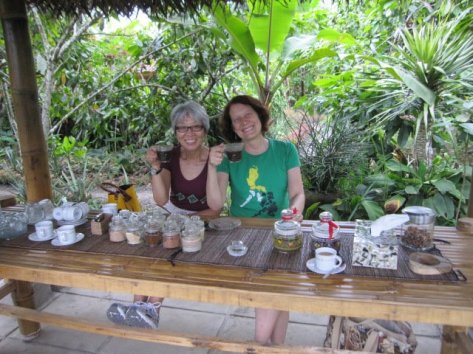
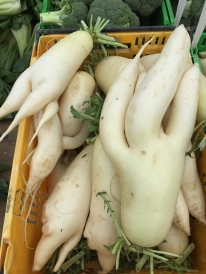


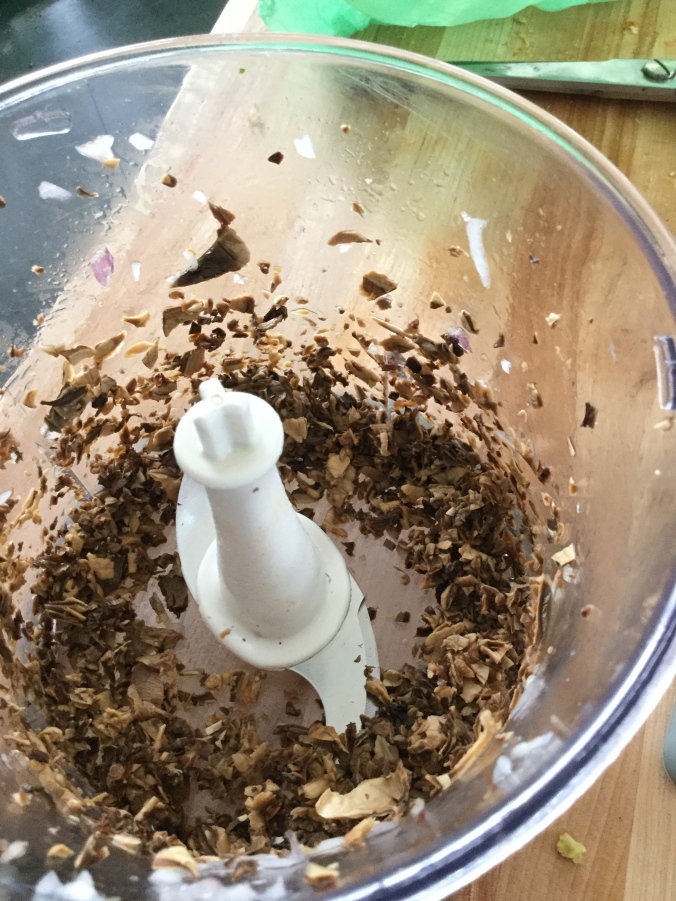

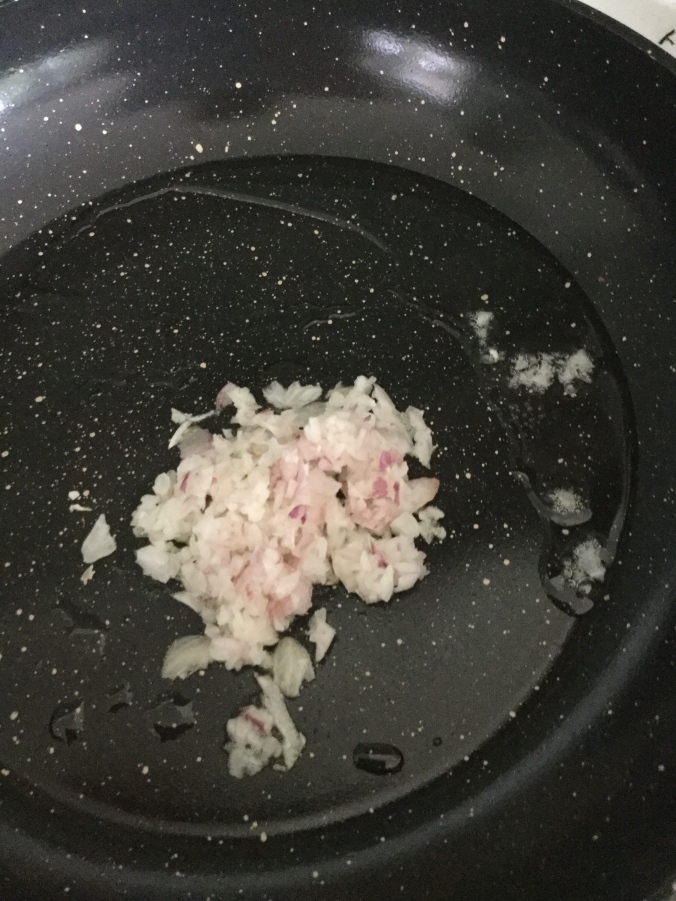
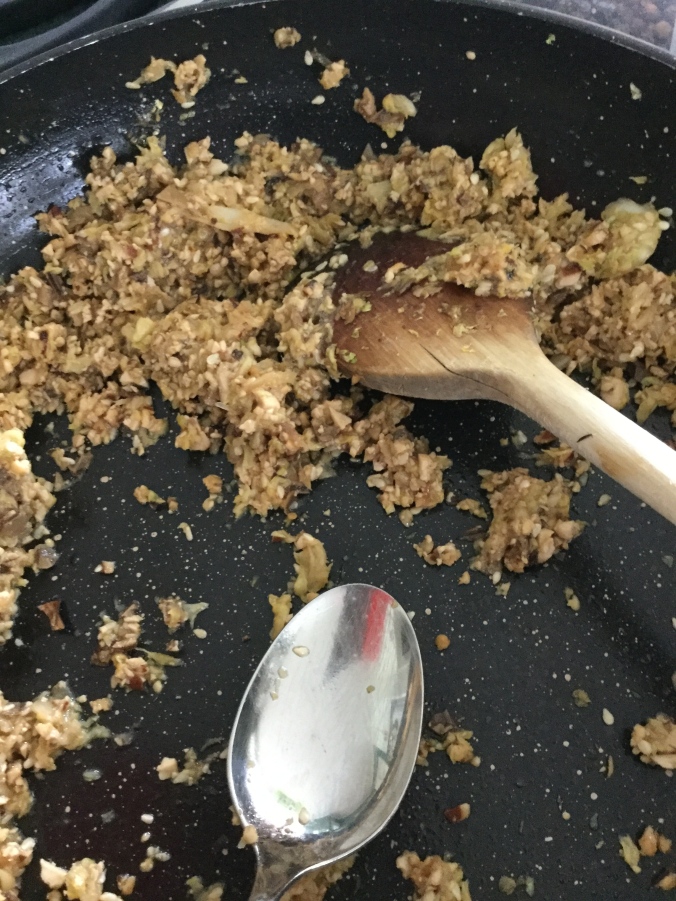
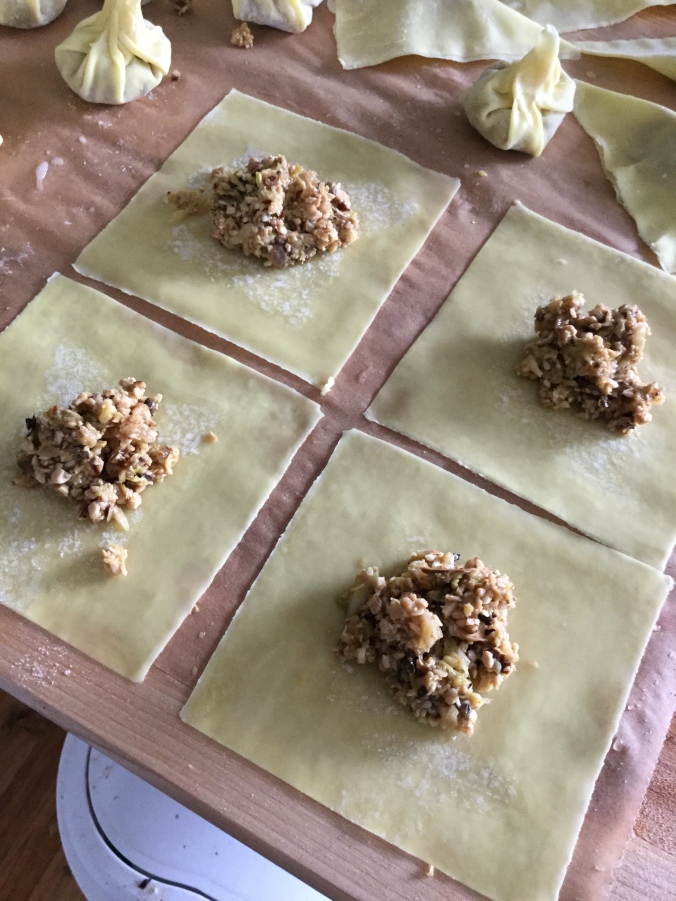
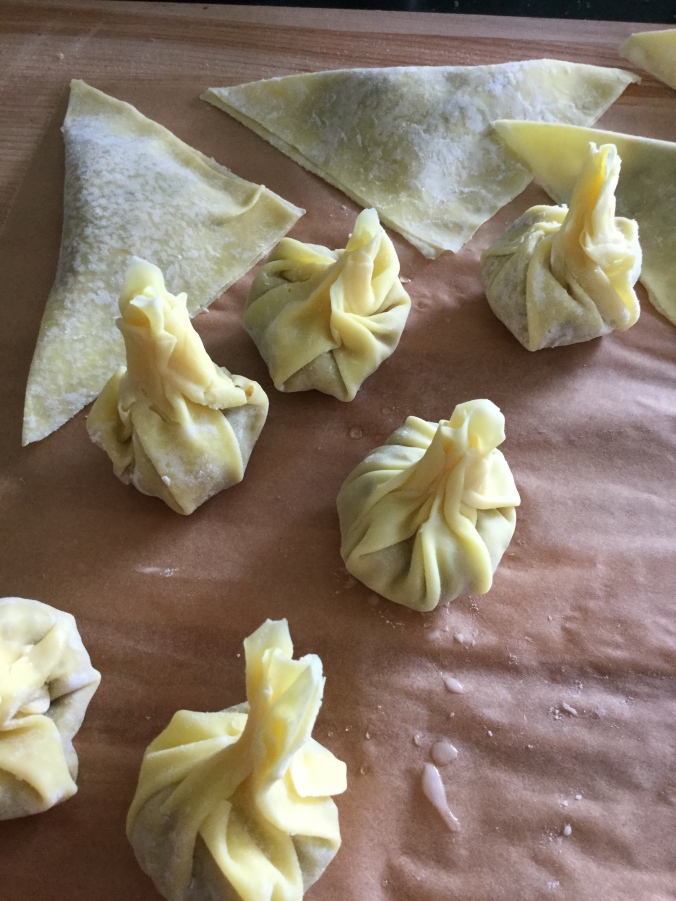

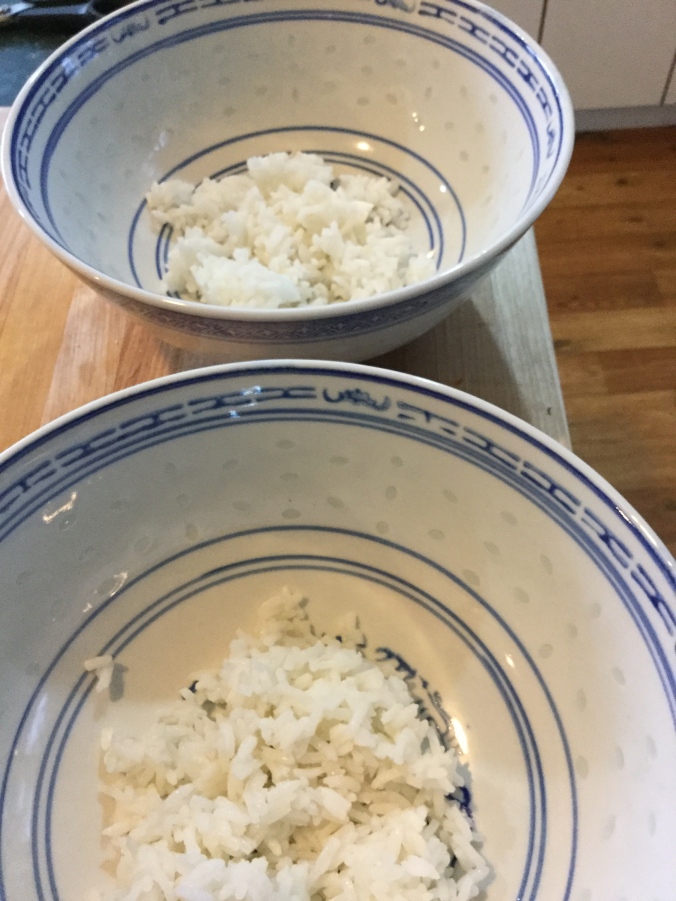









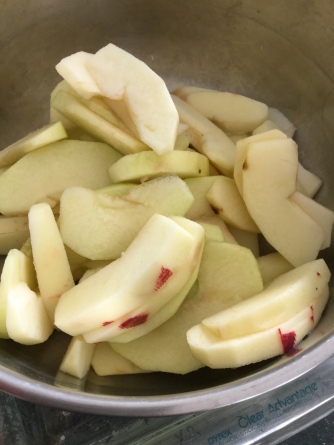








 Now they are a national franchise and they have wandered from their Memphis roots. RH&B now offers five different sauces, <gasp> Barbecue Brisket, and <double gasp> pulled chicken. The original, homey, hole-in-the-wall location in Arlington has, sadly, closed.
Now they are a national franchise and they have wandered from their Memphis roots. RH&B now offers five different sauces, <gasp> Barbecue Brisket, and <double gasp> pulled chicken. The original, homey, hole-in-the-wall location in Arlington has, sadly, closed.

 I used Penzy’s Ozark Blend, which is very black peppery. Think Col. Sanders secret herbs and spices. If you don’t live in the United States and can’t get Penzy’s excellent spice blends, use whatever spices you like. And next time you are in the US, find a Penzy’s store and stock up! You can mail order, too.
I used Penzy’s Ozark Blend, which is very black peppery. Think Col. Sanders secret herbs and spices. If you don’t live in the United States and can’t get Penzy’s excellent spice blends, use whatever spices you like. And next time you are in the US, find a Penzy’s store and stock up! You can mail order, too.





















 decided to take up something — meditation, daily prayer, volunteering, swimming — in the hope that what started as a seasonal discipline would become a habit. It worked the year I challenged myself to go to the gym every day. I initially took up yoga as a Lenten discipline. That stuck too, for a while.
decided to take up something — meditation, daily prayer, volunteering, swimming — in the hope that what started as a seasonal discipline would become a habit. It worked the year I challenged myself to go to the gym every day. I initially took up yoga as a Lenten discipline. That stuck too, for a while.

 Another year, I pledged to read Moby Dick, my lifelong literary bête noir. The. Most. Boring. Novel. Ever. Written. I failed. I’d rather spend forty days wearing a hair shirt. Note to l’Académie française: I’ll give up my circonflexe when you pry it from my cold, dead fingers. If for no other reason, because without it, my spell checker keeps changing bête to bets or beets.
Another year, I pledged to read Moby Dick, my lifelong literary bête noir. The. Most. Boring. Novel. Ever. Written. I failed. I’d rather spend forty days wearing a hair shirt. Note to l’Académie française: I’ll give up my circonflexe when you pry it from my cold, dead fingers. If for no other reason, because without it, my spell checker keeps changing bête to bets or beets.


 Too much of a sacrifice. As much as I admire Mary, giving up baking would rob me of one of my most important emotional outlets. Simon and the boys might appreciate my giving up the accordion, but I wouldn’t want to lose my place with my lovely accordion teacher, Katie. The Kale Whisperer can’t give up Kale.
Too much of a sacrifice. As much as I admire Mary, giving up baking would rob me of one of my most important emotional outlets. Simon and the boys might appreciate my giving up the accordion, but I wouldn’t want to lose my place with my lovely accordion teacher, Katie. The Kale Whisperer can’t give up Kale.




 I am learning to play the accordion.
I am learning to play the accordion.

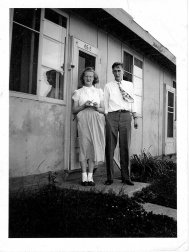



 thermal North. As I fell in love with my new home, I also started to learn, slowly, how to live with myself.
thermal North. As I fell in love with my new home, I also started to learn, slowly, how to live with myself.
 Now my scars are honestly come by, from a blazing hot pizza oven or careless use of the mandolin slicer. They tell stories of pizza and coleslaw; of bread loaves and pickles; of kiwi pies and vegetable calzones; of turning hot corn tortillas with fingers instead of tongs.
Now my scars are honestly come by, from a blazing hot pizza oven or careless use of the mandolin slicer. They tell stories of pizza and coleslaw; of bread loaves and pickles; of kiwi pies and vegetable calzones; of turning hot corn tortillas with fingers instead of tongs.